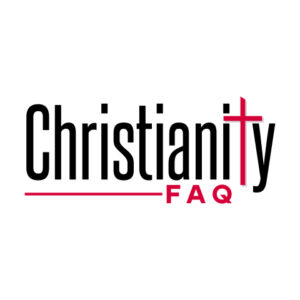Most people associate denominations with the Protestant branch of Christianity, but some also use the term to describe other congregations. Some of these are in the Catholic communion, and others, though they call themselves Catholic, aren’t. Debate surrounds calling congregations outside the Roman Catholic communion “denominations” because it implies a level of unity that Rome doesn’t recognize.
Some so-called “Catholic denominations,” such as Eastern Rite churches, are in communion with the Roman Catholic Church. Others, like the “Reformed Catholic Church” in America, aren’t. Regional networks within the Roman Catholic Church, like the Catholic Church in Russia, shouldn’t be considered denominations.
What are other examples of Catholic denominations? What do they believe? How big are their memberships? How are regional networks within the Roman Catholic Church different than other Catholic denominations? Keep reading to learn more.

Catholic Denominations
In general use, the term “denomination” doesn’t convey whether a certain network of congregations is in communion with the Roman Catholic Church or not.
It’s important to note that the Catholic Church doesn’t refer to congregations that aren’t in communion with them as “denominations” but considers them non-Catholic or non-Christian. (Also see Catholic vs. Non-denominational: What’s the Difference?)
Each network of congregations described below has its history and in some cases, a unique set of beliefs that doesn’t conform to the historic teachings of Roman Catholicism.
Some groups split from Rome because they believed the church was too conservative. Other groups split from it because they believed it was too liberal.
American Catholic Church in the United States
The American Catholic Church in the United States (ACCUS) was founded in 1999. Its total membership is less than 10,000 people.
ACCUS congregations split with the Roman Catholic Church because they believed it was too traditional and conservative for the 21st century.
The network is “a contemporary expression of an ancient faith.” Their community “embraces a broader faith where all are welcomed and affirmed.”
The network introduces itself to people like this, “More than likely, you may be surprised to discover one of the best kept secrets in the Church Catholic – that other bodies of that same church grow and thrive independent of the institutional church.” [1]
Theology, doctrine, and biblical teaching aren’t emphasized in ACCUS congregations. Instead, the network has other priorities.
- Issues at the forefront of their decision included beliefs about homosexuality and the practice of same-sex marriage. ACCUS congregations support progressive ideas and laws on these matters.
- The congregations don’t pay priests but volunteer their time when ministering to others.
- ACCUS congregations value raising awareness about clergy abuse in the Catholic church.
Also, see Does the Catholic Church Recognize Baptisms from Other Denominations?
Eastern Rite Catholic or Uniate Churches
So-called “Eastern Rite” churches, “Eastern Churches, or “Eastern Catholic Churches,” are in communion with the Roman Catholic Church. Each network of churches has its own history.
It’s estimated that over 500,000 Catholics worship in Eastern Rite congregations. A “rite” refers to an order of worship or a certain liturgical tradition. Eastern Rite churches include,
- Alexandrians: Copts, Ethiopians
- Antiochene: Maronites, Syrians, Malankarese
- Armenian, Chaldean: Chaldean and Malabarese
- Byzantine: Hungarian, Yugoslav, Melkites, Ukrainian
- Ukrainian Greek Catholic Church: This network of churches practices the Eastern rite. The Ukranian-Greek Catholic Church practices the Western rite.
Churches in the Eastern Rite have liturgy rooted in Eastern Orthodox Christianity. However, these networks have willingly chosen to be in communion with the Roman Catholic Church. (Also see Is Catholicism a Religion or Denomination: What’s the Difference?)
Each Eastern Rite network has its own leader, though he isn’t a pope in charge of bishops, priests, and congregations in their jurisdiction.
Each Eastern Rite head is part of the “Congregation of Orthodox Churches” leadership group, which is a body that serves as the liaison between the Vatican in Rome and Eastern Rite churches.

Ecumenical Catholic Church +USA
The Ecumenical Catholic Church was founded in 2003. Its membership is about 2,000 people, most of whom are former members of the Roman Catholic Church. It describes itself this way, “The Ecumenical Catholic Church +USA is an Alternative Catholic Community in the Apostolic Tradition” [2]
Congregations in this network affirm their commitment to Catholic doctrine and theology but don’t recognize the infallibility of the pope. The network supports the ordination of women. It doesn’t affirm same-sex marriage. (Also see Denominations vs Sects: What’s the Difference?)
The Ecumenical Catholic Communion
The Ecumenical Catholic Communion was founded in 2003. It has about 3,000 members. The network states its mission this way, “We profess our faith in Christ in the living Catholic Tradition handed to us from the Apostles through many generations. And we stand open to a dialogue with those of other religious identities and faith traditions.”
Though similar to the Ecumenical Catholic Church, it takes more progressive stances on certain social issues. The network supports the ordination of women and marriage for clergy. It also supports same-sex marriage and performs same-sex weddings. (Also see Do All Denominations Observe Lent?)
Polish National Catholic Church of America
The Polish National Catholic Church of America was founded in 1897. It has about 25,000 members. This network of churches started in Pennsylvania when Eastern European immigrants wanted to have church services in their own languages. Rome didn’t recognize this group and excommunicated them.
The network describes their origins this way, “During the latter part of the 19th century, there were a number of conflicts between the Polish immigrants and the Roman Catholic clergy and hierarchy in the United States. These had primarily to do with church governance issues, the control of church property, the assignment of pastors, and the pastoral accessibility to the people.” [3]
The first synod of PNCCA congregations occurred in 1904. 150 clergy attended from around the Northeast United States. The network’s first “Confession of Faith” was written in Chicago in 1914.
Today, there are 5 dioceses in the PNCCA network. In 1921, clergy were allowed to marry with bishop approval. The network opposes the ordination of women. (Also see Can You Be a Christian Without a Denomination?)

Reformed Catholic Church
The Reformed Catholic Church was founded in 1988. It has about 57,000 members. “Reformed,” in this case, doesn’t refer to “Reformed theology” that characterized some Protestant traditions like Presbyterianism.
The network describes itself this way, “The Reformed Catholic Church is an Independent Catholic Church, not under the authority of the Bishop of Rome. We are similar in our liturgy, sacraments and apostolic succession.”
It continues, “Our heritage flows from the Catholic Church, which split with the Roman Catholic Church in 1870 over certain doctrines of the First Vatican Council. We profess a more progressive theology, ordain men and women, offer open communion, and are fully affirming and inclusive of the LGBTQ community in the life of the Church, including Holy Orders.” [4]
The RCC network generally accepts Catholic worship, spirituality, and some of its theology. The Eucharist is available to all people, no matter their membership status or sexual orientation, or gender identity. (Also see How to Choose a Denomination?)
Society of Saint Pius X
The Society of Saint Pius X was founded in 1969. It has about 20,000 members. The Roman Catholic Church doesn’t recognize the network.
Archbishop Marcel Lefebvre, a priest in the Holy Ghost Order, founded the Society. Members believe that Vatican II led the Catholic church astray. The Society promotes the teachings of Vatican I instead.
What about regional Catholic churches?
Sometimes people mistakenly believe that the Roman Catholic Church’s presence in certain regional or geographical areas represents a “denomination” of the church.
For example, some believe think the Romanian Catholic Church is a denomination within the Roman Catholic Church. The truth is, the name “Romanian Catholic Church” is just the name of the Roman Catholic Church in Romania.
Also, see Do All Christian Denominations Use the Same Bible Translation?
References:
[1] Source
[2] Source
[3] Source
[4] Source
Source
Source
Source
Related Questions
Wondering What Denominations Are Calvinist? Here’s the Answer
The teachings of French pastor and theologian John Calvin (1509-1564) have been a significant part of the Protestant branch of the Christian faith for over 500 years. At the beginning of the 21st...
Arminianism, which is often contrasted with Calvinism, has been an influential theological belief system in Protestant Christianity for 500 years, though some aspects of it are much older. Just like...
